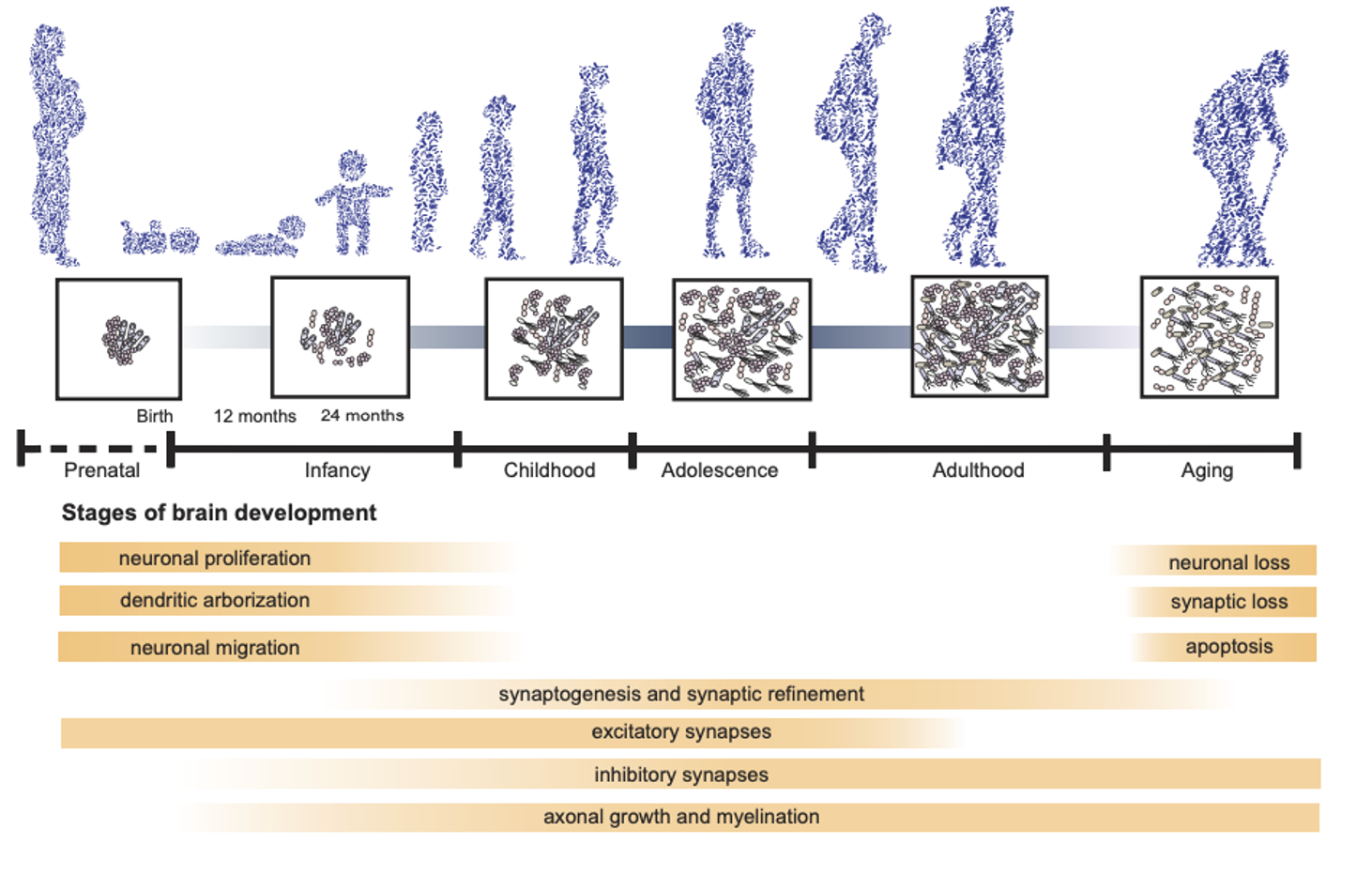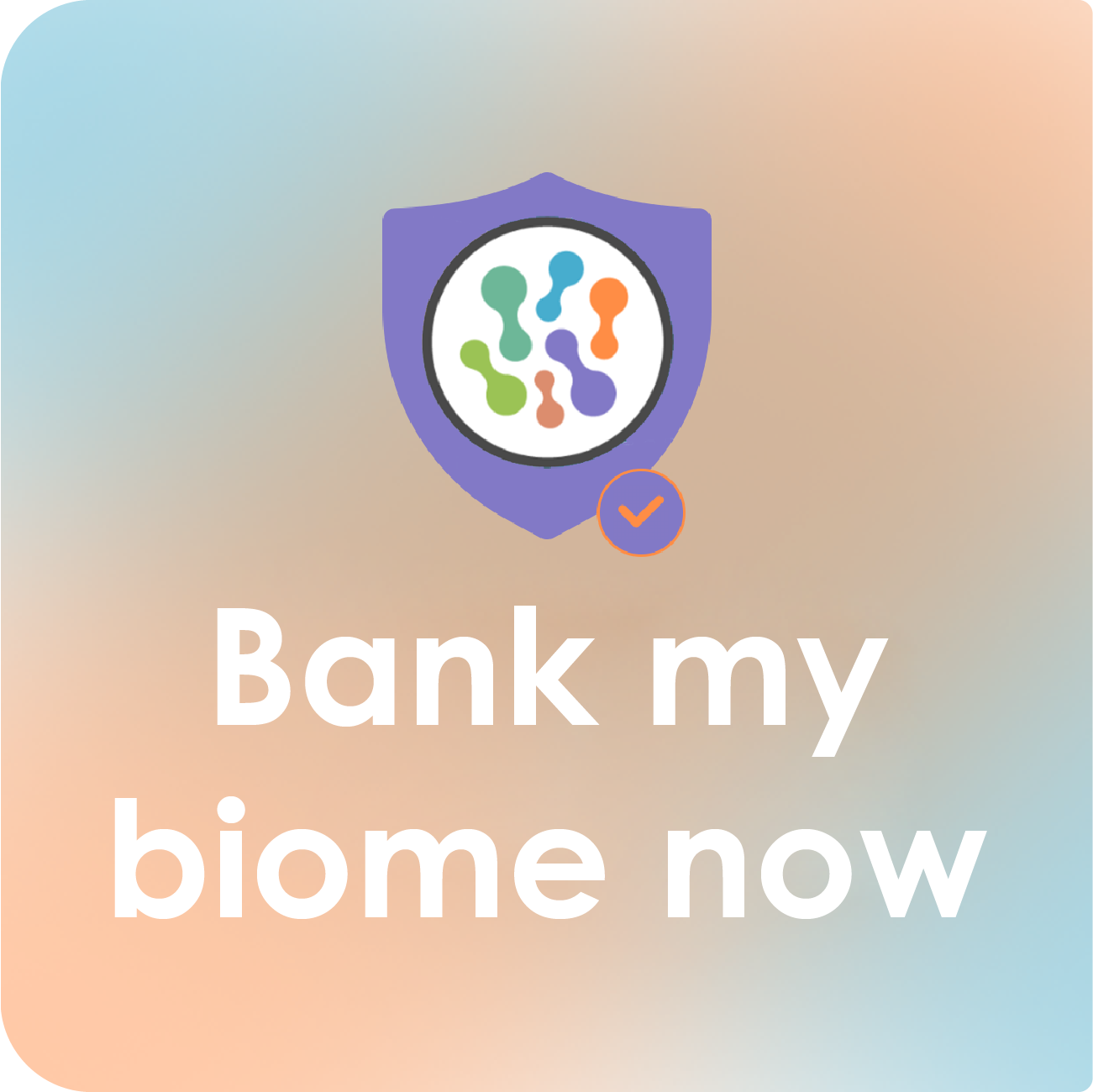
By: Dr. Shaina Cahill, Ph.D. (Director Medical Communications & Affairs)
The gut microbiome is essential for overall health and well-being 1–4, and research shows that this important system is altered in children with ASD 5–23 (Learn more about the gut microbiome in ASD here). One function of the gut microbiome is communication with the brain via the gut-brain axis, which allows for bidirectional communication between the gut and the brain, which can modulate the brain’s physiological state and behavioural phenotypes 24–28. This communication appears to play a large role in normal brain development and neurodevelopmental disorders.
The impacts of the microbiota-gut-brain axis on development and neurodevelopmental disorders
At both extremes of life, in infancy and old age, the gut microbiome is characteristically different from that of the adult 25,29–31. Research indicates that gut dysbiosis, either in early childhood or in the elderly, significantly increases the likelihood of brain dysfunction 27. While little is known about the specific role the gut microbiome plays in normal brain development and to what extent it plays in neurodevelopmental disorders, we do know that the gut and brain are formed from the same tissue in-utero and work closely together throughout one’s lifetime, influencing each other through the gut-brain axis 24,26,32.
 Figure from Cryan et al., 2019: Timeline of the changes in the microbiome across the lifespace, from birth to old age
Figure from Cryan et al., 2019: Timeline of the changes in the microbiome across the lifespace, from birth to old age
Early childhood is a period of significant behavioural, immune and biological development, where a relationship between the gut microbiome and the brain is thought to play an instrumental role 33–37. The influence of the gut microbiota during neurodevelopment appears to be essential for normal brain development and maturation 20,37–40. Research suggests there are “critical periods” for the effects on the brain to take place upon microbe exposure 2,26,41–45. It has been hypothesized that during these critical periods, the gut microbiota are highly influential concerning neurodevelopment 12,25,27,46–49. Research indicates a correlation between childhood microbiota composition and behavioural temperament, functional activity/connectivity in the brain, and cognitive function 25,50–53. While this would to suggests a clear link between gut microbiota and neurodevelopmental disorders, this relationship is correlative rather than causal 26. More clinical research is needed to understand whether changes in the gut microbiome are cause, consequence or unrelated to neurodevelopmental diseases and whether restoring the gut microbiome to a healthy state can resolve these conditions.
Autism-gut-brain axis, is it really that connected?
Studies have indicated that children with ASD are almost three times more likely to experience GI symptoms than typically developing (TD) peers, as well as experience a significantly higher number of GI symptoms 15,54–58. In tandem with this, children with ASD have an abnormal and underdeveloped gut microbiome compared to TD children 5–23 (Learn more about GI issues in children with ASD here).
It has been suggested that this abnormal gut development may impact cognitive development and programming of the immune system by disrupting critical physiological processes during brain development 20,33,37,39. In children with ASD, GI symptoms have been reported to be strongly correlated with the severity of autistic-related behaviours 8,11,12,19,59–62, providing support for the role the gut microbiome may play in this neurodevelopmental disorder.
The role of the gut microbiome in ASD may be tied to the alteration in neurotransmitters created in the gut. Studies have shown that multiple pathways related to neurotransmitter biosynthesis (creation) are significantly depleted in the gut microbiome of children with ASD compared with TD children, which may have profound functional consequences on the psychiatric abnormalities in ASD 11,15,20,63. It is possible that altered production of microbial metabolites, precursors to neurotransmitters, may exacerbate ASD symptoms and may provide a possible mechanism underlying the genetic susceptibility of ASD 8,11,15,20,64.
Our focus at Novel Biome is on supporting autistic children who suffer from digestive symptoms and significant microbiome imbalance to restore their microbiome through Fecal Microbiota Transplantation (FMT).
In health,
Team Novel Biome
References: 1. Belkaid, Y. & Hand, T. W. 2014, 2. Rutsch, A. et al. 202, 3. Vatanen, T. et al. 2016, 4. Wilson, B. C. et al. 2019, 5. Coretti, L. et al. 2018, 6. De Angelis, M. et al. 2013, 7. De Angelis, M. et al. 2015, 8. Ding, X. et al. 2020, 9. Finegold, S. M. et al. 2010, 10. Huang, H. et al. 2019, 11. Huang, M. et al. 2021, 12. Jendraszak, M. et al. 2021, 13. Kang, D.-W. et al. 2013, 14. Liu, S. et al. 2019, 15. Liu, Z. et al. 2021, 16. Ma, B. et al. 2019, 17. Plaza-Díaz, J. et al. 2019, 18. Pulikkan, J. et al. 2018, 19. Tomova, A. et al. 2015, 20. Wan, Y. et al. 2021, 21. Wang, L. et al. 2011, 22. Wang, M. et al. 2019, 23. Zhang, M. et al. 2018, 24. Chen, X. et al. 2013, 25. Cryan, J. F. et al. 2019, 26. Deidda, G. & Biazzo, M. 2021, 27. Dinan, T. G. & Cryan, J. F. 2017, 28. Rhee, S. H. et al. 2009, 29. Claesson, M. J. et al. 2012, 30. Salazar, N. et al. 2014, 31. Salazar, N. et al. 2017, 32. Cattell, M. et al. 2011, 33. Clarke, G. et al. 2014, 34. Diaz Heijtz, R. 2016, 35. Diaz Heijtz, R. et al. 2011, 36. Manco, M. 2012, 37. Milani, C. et al. 2017, 38. Cryan, J. F. & Dinan, T. G. 2012, 39. Houghteling, P. D. & Walker, W. A. 2015, 40. Zhuang, L. et al. 2019, 41. Clarke, G. et al. 2013, 42. Fleshner, M. et al. 2017, 43. Gomez de Agüero, M. et al. 2016, 44. O’Mahony, S. M. et al. 2017, 45. Vuong, H. E. et al. 2020, 46. Borre, Y. E. et al. 2014, 47. Gensollen, T. et al. 2016, 48. Gur, T. L. et al. 2015, 49. Dinan, T. G. & Cryan, J. F. 2017, 50. Callaghan, B. L. et al. 2020, 51. Carlson, A. L. et al. 2018, 52. Christian, L. M. et al. 2015, 53. Gao, W. et al. 2019, 54. Buie, T. et al. 2010, 55. Ferguson, B. J. et al. 2019, 56. Holingue, C. et al. 2018, 57. Johnson, C. R. et al. 2014, 58. Restrepo, B. et al. 2020, 59. Adams, J. B. et al. 2011, 60.


